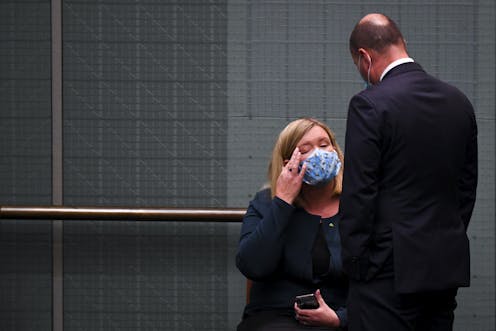A sign of healthy democracy or a 'rudderless' nation? How crossing the floor has changed
- Written by Camilla Nelson, Associate Professor in Media, University of Notre Dame Australia
 Lukas Coch/AAP
Lukas Coch/AAPThe final days of parliament for 2021 have been marked by a spate of floor crossings.
This includes Tasmanian Liberal Bridget Archer who backed Independent Helen Haines’ integrity commission bill and conservative Coalition MPs voting in favour of a One Nation bill against vaccine mandates. Meanwhile, a group of moderate Liberals...
Read more: A sign of healthy democracy or a 'rudderless' nation? How crossing the floor has changed













